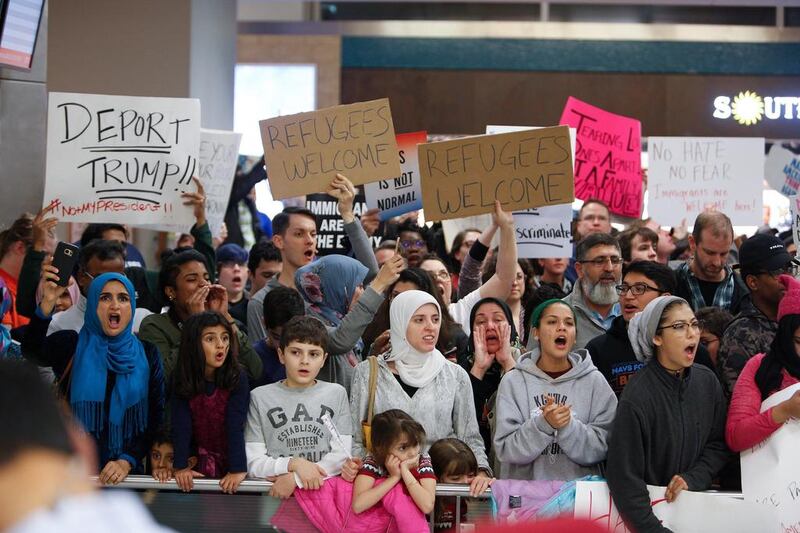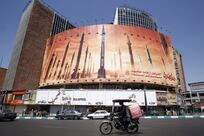During the past century, Arab-Americans have faced significant obstacles on the way to securing their place in the political mainstream — from pervasive negative stereotypes to the political pressures used by some groups to deny them a seat at the table.
In addition to these external factors, Arab-Americans have also faced internal obstacles that they had to overcome as they worked to build and empower their community. There were village and family rivalries or disputes between political ideologies or competing interests based on country of origin. There were also issues of sectarian identification.
To a remarkable extent, they have been successful, more successful than the Arab world has been in healing its multiple divides.
At the height of the Lebanon civil war, an Arab ambassador visited my office. He began with a question: "how do you organise your staff?" I responded by pointing out where the field organising unit had its desks, and in turn where the communications, research, finance and administrative staff were seated. He asked again: "no, I mean how do you organise them?" When I repeated "by function", he came back with "what I mean is that young man sitting out front, he's Shia, isn't he? How many other Muslims and Christians, etc?". I said: "if you mean Rami. I have no idea what his religion might be, I never asked him".
I wasn't being disrespectful. I honestly didn't know. In all the years Arab-Americans have been working to build a community, they've not paid attention to where people were from or the sect to which they belong. They were building a community that was based on a shared heritage.
Over the years, I have seen evidence of this "sense of community" manifesting itself in many different settings: whether it was Lebanese American businessmen contributing the resources to help them open a social service centre for Yemeni farm workers, or a predominantly Palestinian community providing the support needed to bring Lebanese victims of war to the United States for medical treatment.
A generation ago Jesse Jackson offered sage advice to the community when he told it: "do not import the divisions of the Middle East; instead you must export the lessons of cooperation and coexistence you have learnt in America." And they've tried to do just that.
I've learnt two lessons in my 40 years of doing this work. As chair of the Democratic Party's ethnic council, I've learnt that every ethnic community shares the same internal pressures. Arab-Americans may hail from 22 countries, making their situation a bit more complex, but even communities that appear to be less complicated have their internal divisions to overcome.
I've also learnt that the struggle is never-ending. In each new era, new obstacles arise that must be overcome. The Lebanon civil war threatened to rupture their based on sect and Lebanese versus Palestinian loyalties. Similarly, with Iraq's invasion of Kuwait, the community was once again tested — with more recent immigrants sometimes lining with the sides taken by their countries of origin.
Now it's the Arab Spring, the upheavals that followed, and the emergence of political Islam and the rise of islamophobia that are testing their sense of community and their ability to maintain a shared identity.
To some extent, these internal pressures have been magnified by the rather large numbers of Arab immigrants — over 600,000 — who have come to the United States since the turn of the century. Many came fleeing war or fear of persecution: Syrians, Iraqis, Somalis, Egyptians and Yemenis. They brought with them the wounds of war and, like every wave that preceded them, they may have their feet planted in America, but their heads and hearts are still "back home".
In some quarters, these factors are understandably driving the agenda. There is a fracturing on the grounds of religious identity. In other instances, the fissures are based on loyalties derived from country of origin — whether for or against this or that regime.
While Arab-Americans must be sensitive to these pressures and concerns, they continue to focus on the long-term community building enterprise.
All the while, they keep their focus on history and on the future. What they know is that much of what they are seeing today, they've seen before. Earlier waves of immigrants from the Arab world were no less fragmented. In each case, it took hard work and a generation for a sense of community to take hold. What they've learnt is that if they continue to serve and provide opportunities for empowerment and advancement, the community will be built.
As I look at the remarkable group of young Arab-American interns who have come to the US in recent years, I am reminded of that exchange I had with that ambassador years ago. I don't know where their parents came from and I don't know their religion. What I do know is that they have come to us. I also know that Arab-Americans are working with and for them — so that they can find a common ground and secure their place in the American mainstream as Arab-Americans proud of their heritage and their shared identity.
Dr James Zogby is president of the Arab American Institute





